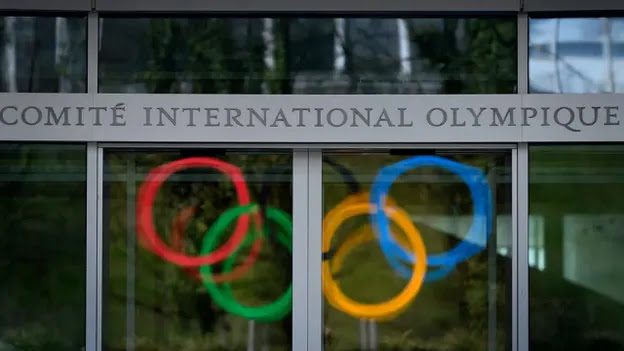2024 Dedh Dew Cans ha Deg
De Sül, ethves warn ügens mis Gorefen
Sunday, 28th July
Ma pemp kelgh junyes e'n arwòdh Gwayans Olympyk, rag an pemp brâstir orijinal (e'n vledhen mil naw cans ha terdhek). An re na a veu Afryca, Europ, Asy, Oceania (Âwstralia ha Zelond Nowydh warbarth) hag America (Noor ha Soth avel üdn brâstir). An liwyow ew blou (e'n barh cledh), melyn, dû, gwer ha rüdh (e'n barh dyhow). An re ma ew liwyow kevys en baners an bes oll. An kelhow ew a'n keth mens, drefen nag ew üdn brâstir moy a bris avel an r'erol. Blou, dû ha rüdh ew ûhelha, melyn ha gwer ew iselha. Martesen whei a welas an pemp kelgh ow rolya en strêtys Paris a-hes. Fatel aljens gwaya? Era an re na gwariers cyrcus war dopp owth aga gwaya war droos?

There are five joined rings in the Olympic Movement symbol, for the original five continents (in the year 1913). Those were Africa, Europe, Asia, Oceania (Australia and New Zealand together) and America (North and South as one continent). The colours are blue (on the left), yellow, black, green and red (on the right). These are colours found in all the flags of the world. The rings are the same size, because no single continent is more important than the others. Blue, black and red are higher, yellow and green are lower. Perhaps you saw the five rings rolling along the Paris streets. How could they move? Were those circus performers on the top, moving them on foot?
Deg ger rag hedhyw Ten words for today
a'n keth mens the same size
brâstir (m) continent (big land)
e'n barh cledh on the left (SWFM y'n barth kledh)
e'n barh dyhow on the right (SWFM y'n barth dyghow)
en strêtys a-hes along the streets
gwayans (m) movement < gwaya to move
iselha lower (SWFM isella)
kelhow (pl.) < kelgh (m) ring, hoop, circle (SWFM kylghyow < kylgh)
r'erol (pl.) others, other ones
ûhelha higher (SWFM ughella)




































